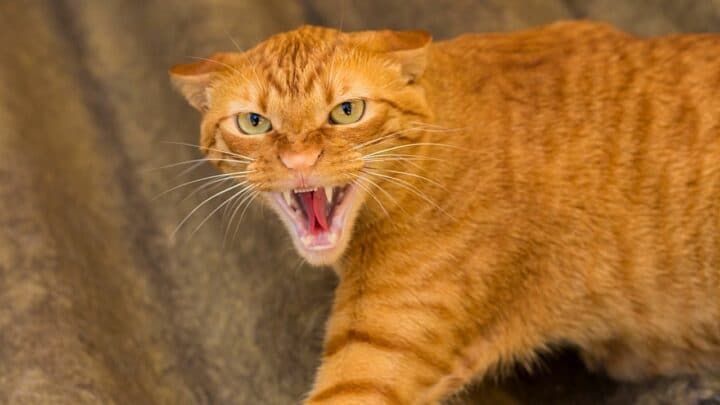Cats are complex, mysterious creatures that can keep us guessing if we don’t pay attention to the many clues they give us. Our cats can let us know how they’re feeling through their many vocalizations in concert with their body language.
The cat’s growl is a distinct form of communication.
So, what could this growl be telling us?
Why Do Cats Growl?
Cats primarily use their growl as a warning to others to stay away. This growl can be triggered by a number of feelings the cat is experiencing, including anger, frustration, annoyance, aggression, and fear. A cat will also growl when she is in pain.
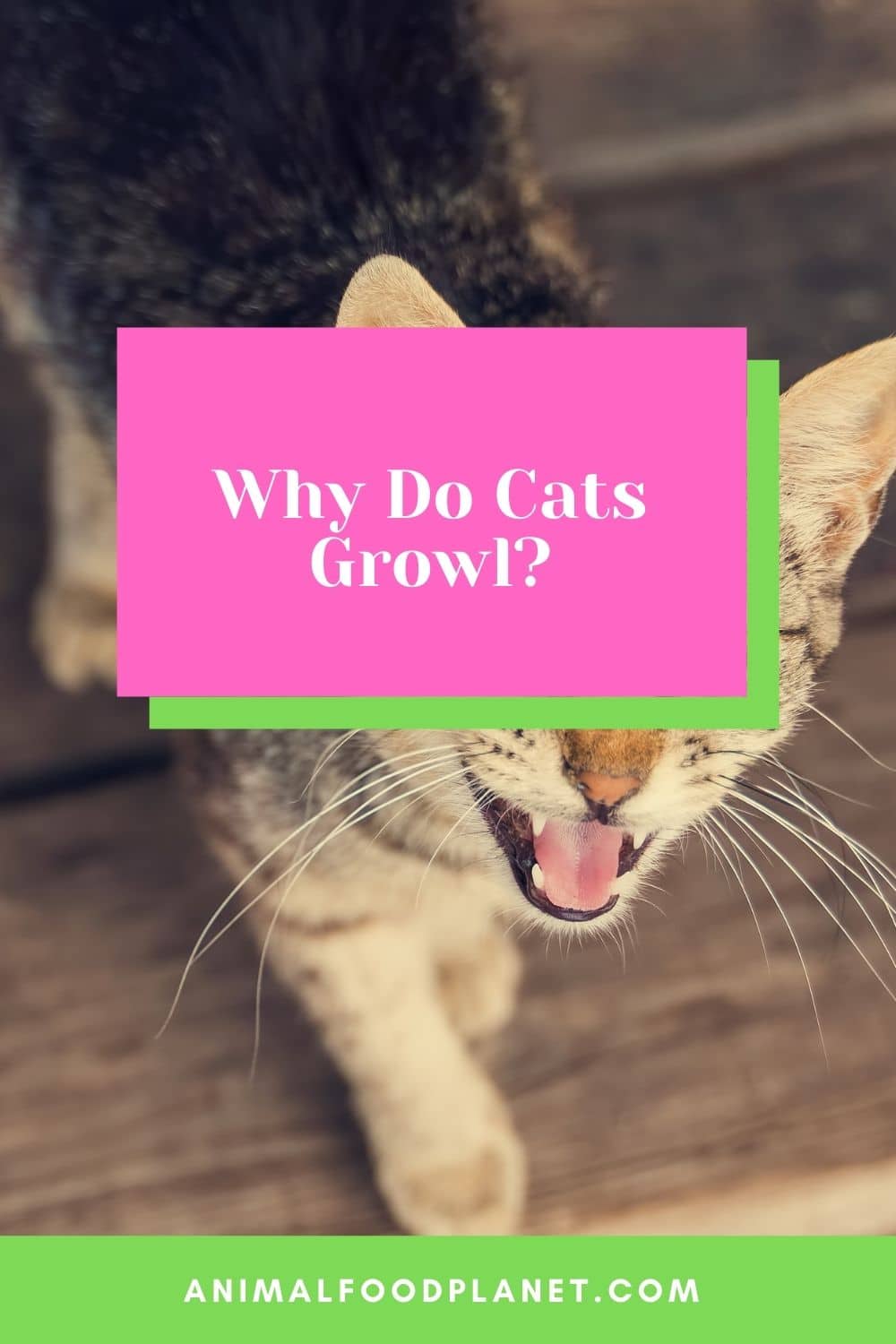
Why Do Cats Growl
First and foremost, a Cat’s Growl is a Warning
He is telling a person or animal to “back off.” Cats are territorial by nature.
So, if another pet, person, or a new pet approaches a particular space, piece of furniture, toy, or even a person they’ve claimed as their own, growling may ensue.
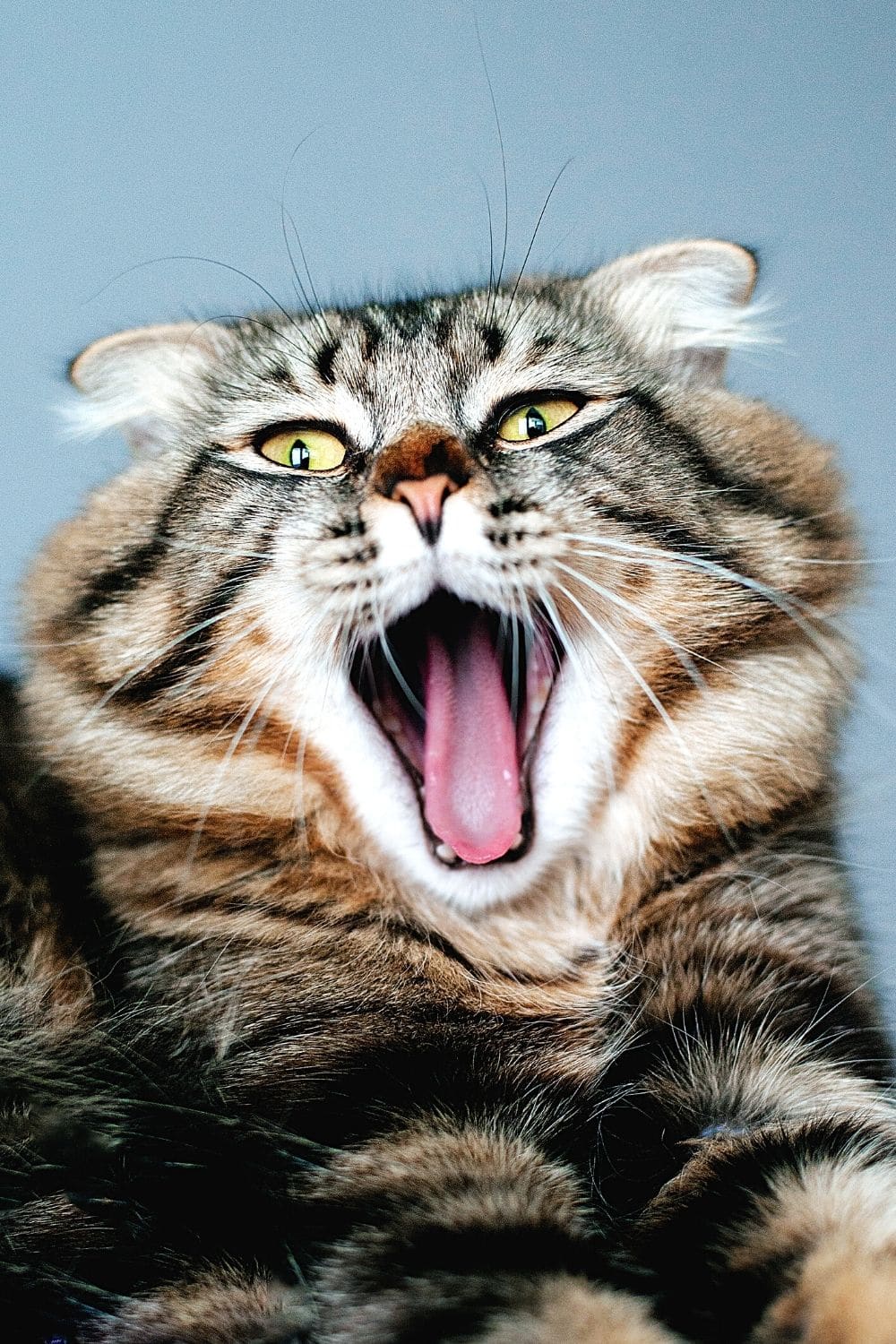
One reason cats growl is that they’re warning a person or animal to stay away
This growling may be accompanied by body language clues, such as bristling fur, flat ears, and pupils fully dilated.
This is a defensive posture.
And, when a cat growls, it is a low-pitched, guttural sound that goes on for a long time. It’s sometimes likened to a dog’s growl.
I think it’s pretty unique to cats because it is raspier.
A Cat Growling is a Sign of Aggression
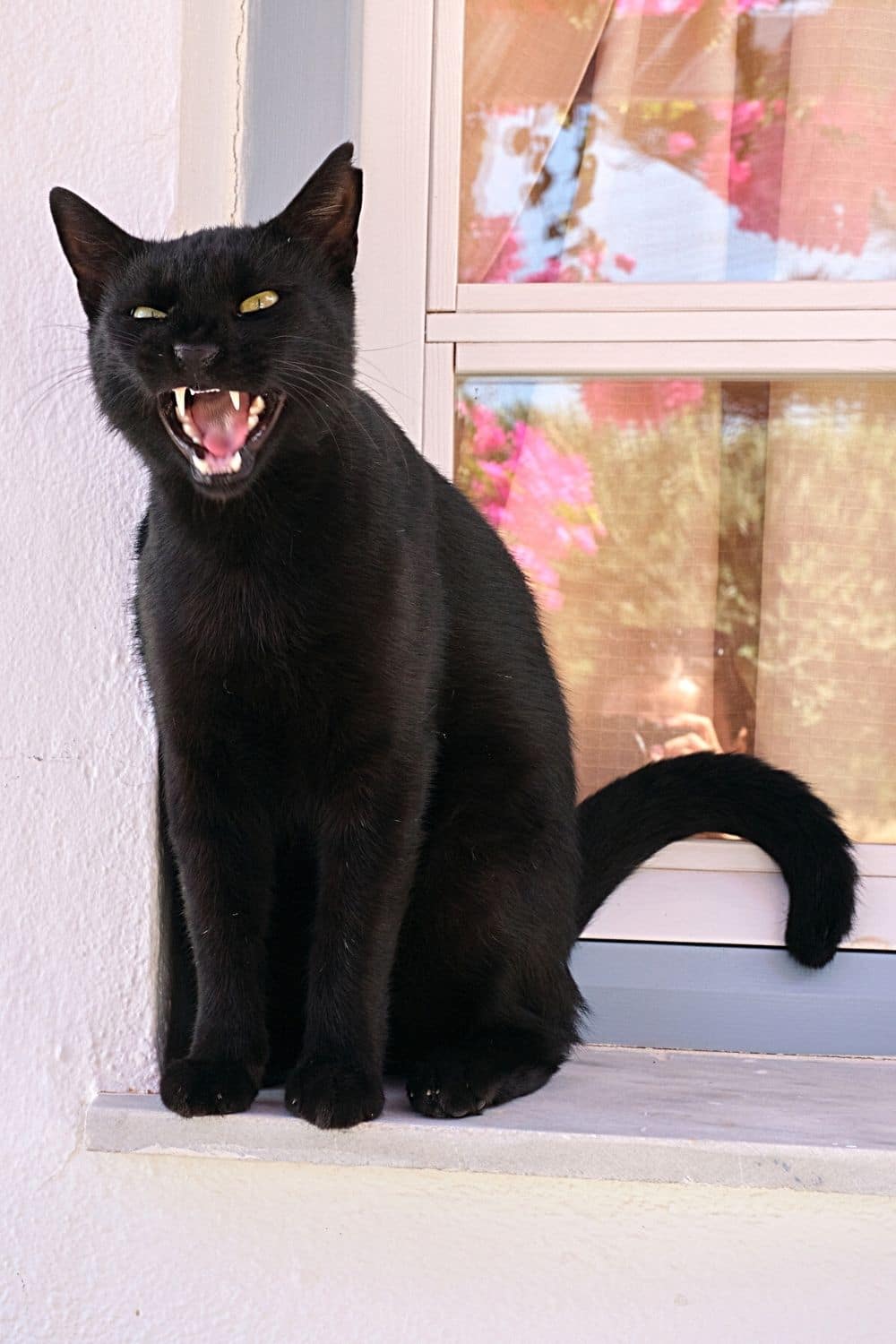
Another reason why cats growl is aggression, which can be of 3 types – possessive, dominance, and non-recognition
There are actually a few types of cat aggression, including non-recognition aggression, possessive aggression, and dominance aggression.
We’ve already spoken a bit about Possessive aggression (when the cat is being possessive of her person, toys, furniture, or special space).
Dominance aggression is more likely to occur in multi-cat households, especially when introducing a new pet.
When I brought a new kitten into the house with my two other cats, there was quite a bit of growling and jockeying for position.
Each of my first two cats had to teach the new kitten who was boss.
Then my tiny Manx made sure to reassert her dominance over my big Russian Blue before everything in the house fall into order.
Hence, you must know the 8 warning signs when introducing cats so you’ll be guided.
Non-recognition aggression happens when one of the pets or people in the household goes away for some period of time, and when they return, the remaining cat or cats don’t recognize their scent.
This could happen if a dog living in the home went to a dog park and he came back smelling of foreign dogs.
The cat might not recognize him because his scent would have changed.
This can cause the cat to growl at the dog until she’s able to recognize him again.
A Cat Growls when it’s Angry
An angry cat will growl at whatever or whoever is piquing his ire, trying to get them to back down.
Failing that, he may attack.
Angry growling will often be accompanied by clear body language. The cat’s ears will be back, his pupils will be constricted, his fur will be standing on end, and his tail may be whipping back and forth.
This is an offensive posture.
Cats Growl Out of Fear
If a cat becomes frightened, confused, or stressed, she may growl at the source of the problem.
For instance, if we change our cat’s environment by introducing new people or pets, this may cause her stress and she will growl at the newcomer.
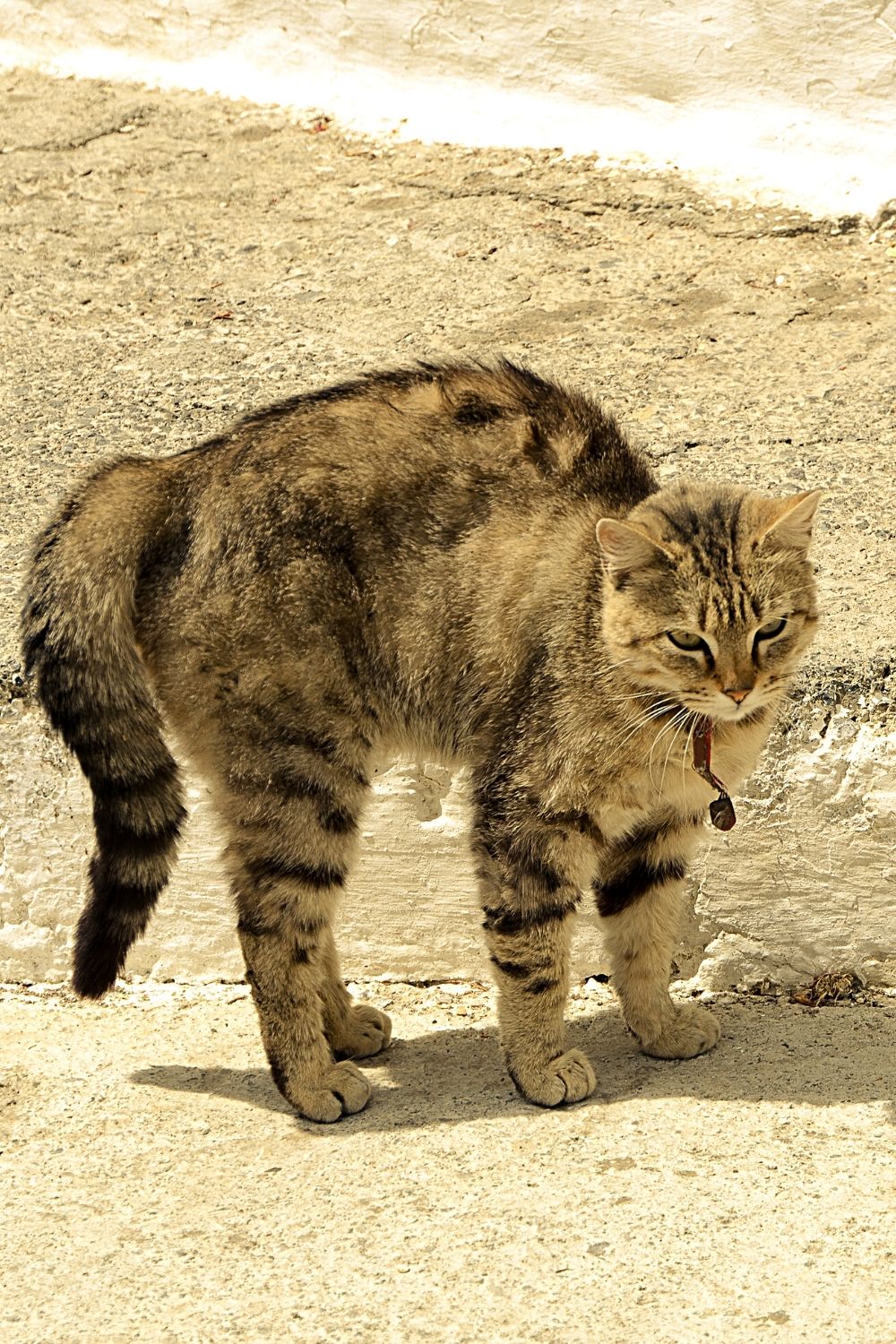
A cat growling from fear or confusion displays a defensive posture
Also, mother cats may fear for their babies and growl at any person who approaches them.
My little Manx had a litter shortly after we moved to a new apartment and I was the only one she didn’t growl at.
Papa wasn’t allowed near the kittens. But, then again, to him, they were interlopers in his home, so he growled at them!
When a cat growls out of fear or confusion, it will generally exhibit a defensive posture.
Pain can also Cause a Cat to Growl
If a cat is experiencing some type of pain, whether it is caused by painful teeth, arthritis, a urinary tract infection, or some other illness or trauma, he may well growl at anyone who approaches or tries to touch him.
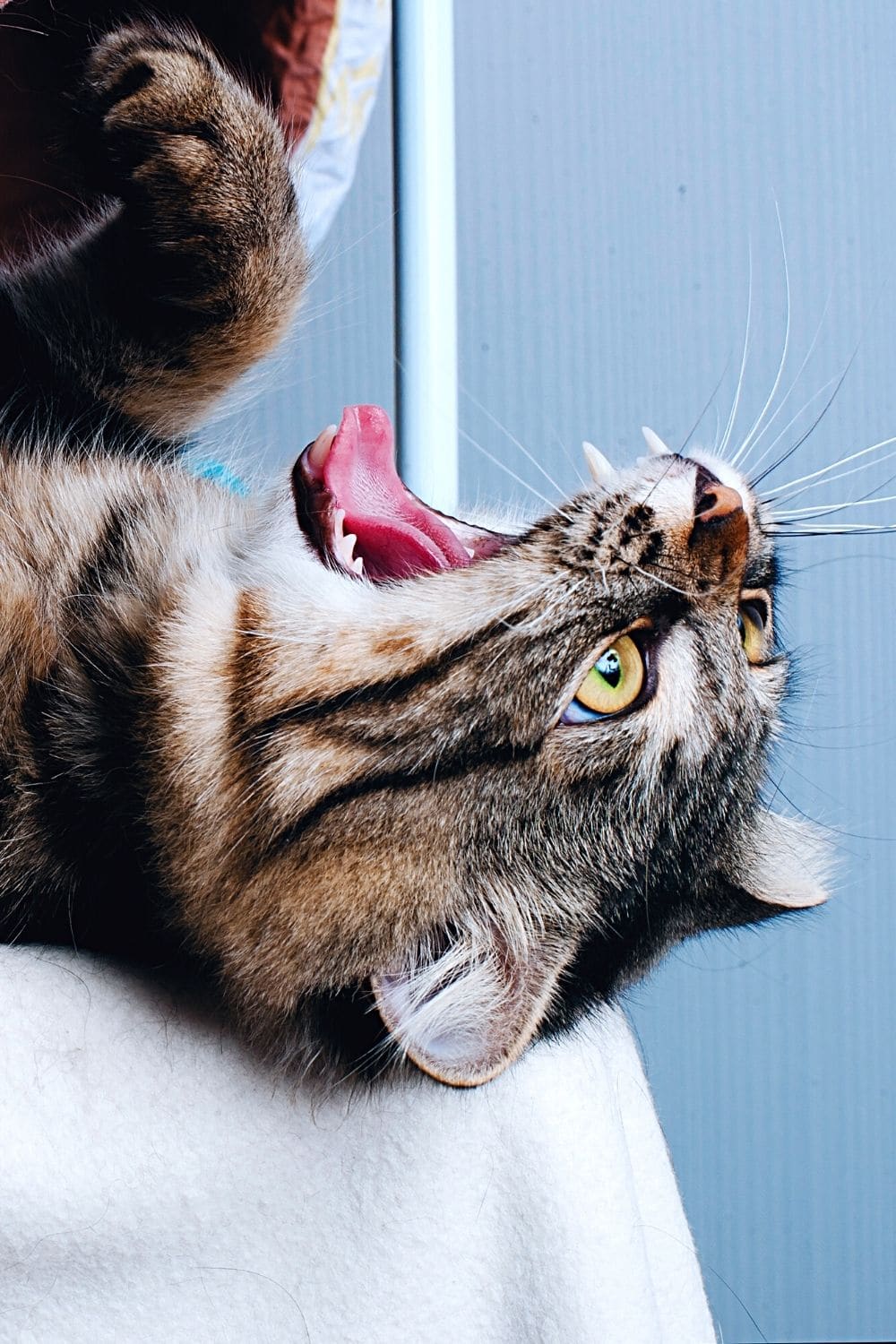
A cat in pain can express it through growling, especially when you touch that painful body part
My Russian Blue suffered a urinary blockage due to the food I was feeding him. He hid from me for days.
When I finally found him, he growled at me but was too sick to fight me. Happily, the vet fixed him right up.
So, if the cat growls when you touch him, when he eats, or if there doesn’t seem to be a reason for the cat to be growling, it might be time for a trip to the vet to have him checked out.
A Cat May Growl when Simply Unhappy, Irritated, or Annoyed
Many felines don’t like being picked up or to be picked up a certain way. They will growl to show their irritation.
When they’ve had enough petting for the moment, cats may also growl, and occasionally slap you, to make it stop.
And, of course, no cat likes to get a checkup at the vet’s, so growling is a given.
Cats may Growl while They’re Eating
This occurs for a number of reasons. One, of course, is pain.
If they have tooth pain, it will hurt to eat.
Another is dominance or territorial aggression.
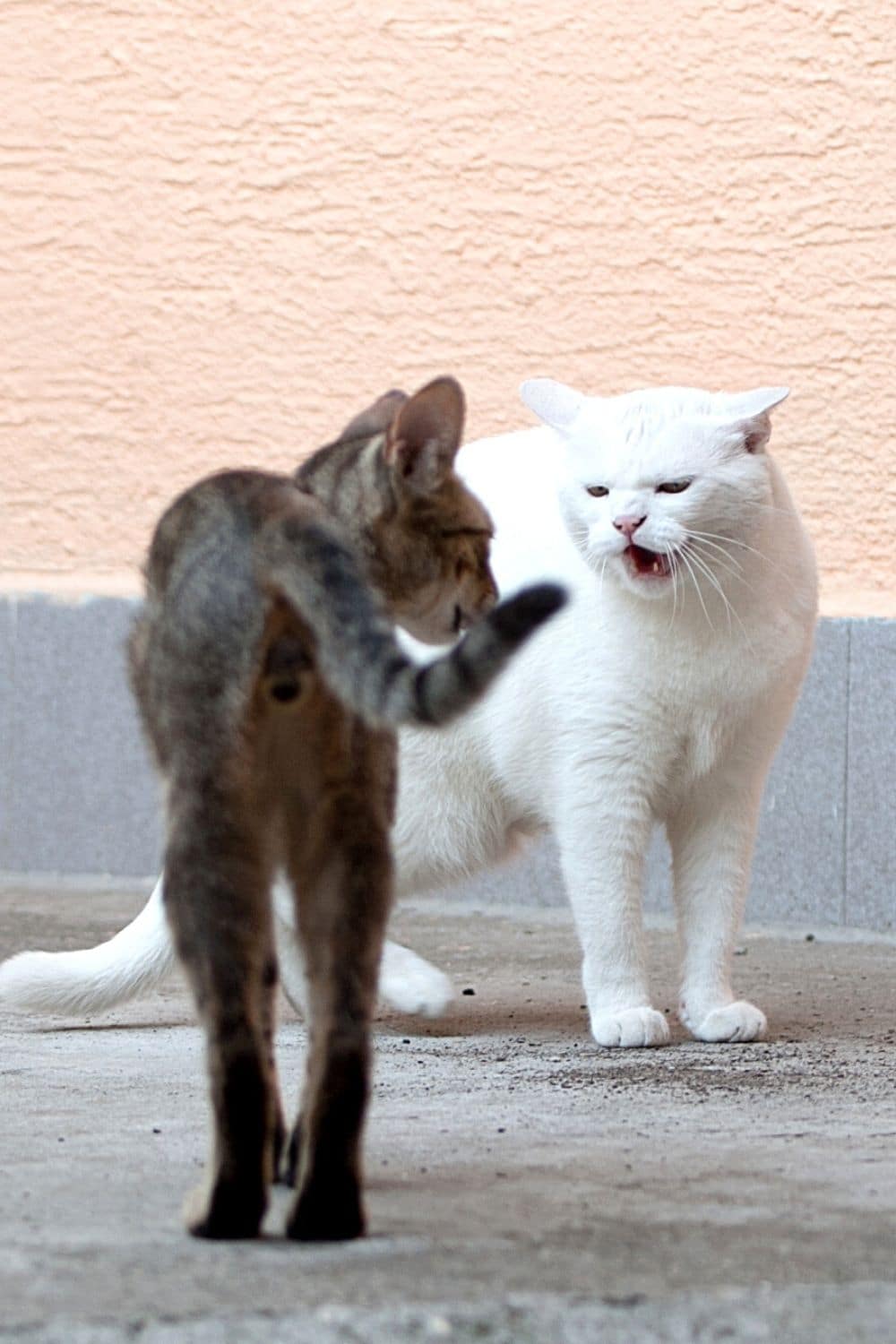
When cats compete for resources like food, they growl to send the other feline away
In fact, “The most common cause of conflict between indoor-housed cats is competition for resources,” such as “space, food, water, litter boxes…or attention from people,” according to the Ohio State University College of Veterinary Medicine.
Cats and kittens may also growl at other cats and people when they eat because they want to be left alone to enjoy their food.
Some reasons for this are living in a multi-cat household where they aren’t fed apart from each other, having previously lived outdoors, and being weaned prematurely.
Frequently Asked Questions about Why Cats Growl
What should I do when my cat growls at me?
The best thing to do is just back off and leave him alone. Don’t scold or punish the cat for growling.
What happens if the cat’s growled warning is not heeded?
The growling can quickly turn into something more physical, like scratching and biting. This behavior’s especially true if the cat already feels angry or cornered.
How can I stop my feline from growling when he eats?
The best way to handle this food aggression is to feed the felines in separate rooms. Also, stay away while they eat. This will ease their stress.
Read about why your cat is foaming at the mouth next.

